Edith Maxwell's Blog, page 236
March 24, 2016
A Wicked Visit to the Flea Market
Jane/Susannah/Sadie here, feeling generous…
One of the things my family likes to do together is visit flea markets. My son looks for vinyl record albums (yes, these are resurging in popularity). My husband looks for old, well-crafted hand tools and fishing equipment. I…try not to buy books or any more china or sparkly glassware or crystal, but I do allow myself to indulge in some costume jewelry here and there.
A couple of weeks ago we visited a flea market in Dudley, Massachusetts. Because I really shouldn’t bring more stuff into my home until I can get some stuff out, I decided to buy virtual gifts for all the Wickeds.
For Edith, I got this oval cast iron griddle because it reminded me of Maddie Day’s new series . Suggest removing that piece of combustible-looking rawhide around the handle and just using a potholder:

For Sherry, I got this 4-foot-high urn. Because you can never have too many of these. And I felt like this was some thing Sarah Winston might find a clue in:

For Jessie, I got these boxes of yarn. I didn’t paw through them, but there’s a good chance there’s some gorgeous baby alpaca in there in just the right color and quantity:

For Barb, I got this awesome hand-carved mariner’s head. This is another thing you can never have too many of. She can hang this prominently, well, anywhere really, for that nautical, fishy, Gorton’s of Gloucester touch. Although, now that I’m looking at this again, it might be a conquistador or Miles Standish, in which case Barb can regift if she wants. Oh no! Is that some crystal in the background? Move away, Jane/Suze/Sadie!

For Liz, I got this adorable little stuffed animal that reminded me of her dog. Clearly, I was so overcome by the cuteness that my hand shook as I was taking the picture. Liz’s dog could also use this stuffie as a chew toy. I love gifts that do double duty.

For Sheila, I got this set of apple candlesticks. At least I think they’re candlesticks for a fat candle? Or maybe a dish can go in each of these metal circles for candy or nuts. Anyway, I just know she needs more apple-themed stuff.

For Julie, I was looking for something to do with the theater. But then I saw these Paris Hilton heels and knew I must get them so Julie can wear them to the Agathas banquet to accept her award.

Finally, for Kim, I got this … tall metal cop. I don’t know exactly what it is because it was up high and I wasn’t wearing my glasses. The head might come off, then she could store stuff in there, liked cursed rings:

And frankly, it’s a good thing this cop was around. Because there might be some criminal activity going on at this flea market–at least of the grammatical variety:

And that ended my shopping spree. Or did it? Fine. I did buy a couple somethings for myself. And they were shiny! But practical too. I bought a small vintage copper-bottom Revere Ware saucepan, and a matching 6″ skillet with lid, all for $8.00. These will go to my cabin, and I really do need them to replace other cookware of lesser quality. So I felt quite virtuous when I left.

So, readers, do you love flea markets? What kind of virtual gifts would you by the Wickeds?
Filed under: Jane's posts, Sadie's Posts, Susannah's posts, Uncategorized Tagged: Barbara Ross, Edith Maxwell, flea market, Jessie Crockett, julie hennrikus, Kim Gray, Liz Mugavero, Sadie Hartwell, sheila connolly, Sherry Harris, Susannah Hardy

March 23, 2016
Wicked Wednesday – Proposals and Contracts
Continuing our March theme of Wednesdays on the craft of being an author, let’s talk proposals and contracts.
Some of us Wickeds write more than one series. Some have proposals pending. Some have ideas for new series. I (Edith) think our readers here will be interested in the process. Let’s dish, Wickeds, on how we get new series into the publishing pipeline and how we plan ahead. We’ve had a few group posts on the process: first three chapters, character sketches, comps and marketing plans, and writing the synopsis. But what’s the overview of a proposal? What are all the parts?
Edith: My agent (all of the Wickeds’ agent, as it turns out) guided me through writing my first proposal back in 2011. 1. Series description. 2. Synopsis of books one through 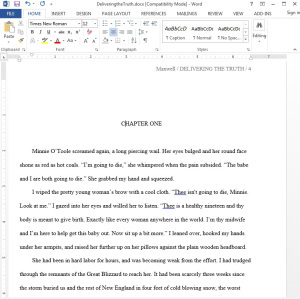 three. 3. Market analysis – in the case of my Local Foods Mysteries, how popular and widespread interest was in local organic foods. 4. Comparable series – showing other popular series with a related theme but not identical. 5. My credentials to write the proposed books: prior fiction publication credits, knowledge of the subject matter, professional memberships. 6. The first three chapters. If you have the entire first book written, so much the better.
three. 3. Market analysis – in the case of my Local Foods Mysteries, how popular and widespread interest was in local organic foods. 4. Comparable series – showing other popular series with a related theme but not identical. 5. My credentials to write the proposed books: prior fiction publication credits, knowledge of the subject matter, professional memberships. 6. The first three chapters. If you have the entire first book written, so much the better.
Barb: Interesting, Edith. I wrote mine for the same agent in the same time frame, but it was slightly different. 1) Overview–description of the premise, 2) Cast of Characters–descriptions of recurring series characters, 3) The Books–three paragraphs or so about each of the first three books, 4) Sample Recipes–since mine was a culinary mystery, 5) Author Biography and 6) The First Three Chapters.
Liz: When I wrote my first proposal in the same timeframe as you two, I did 1) Overview – my main characters and their background which led to the start of the book; 2) Additional series characters; 3) Synopsis of book one and shorter synopses of the next two books; 4) Series tips/recipes; 5) The market – a snapshot of why homemade pet food would attract readers; 6) Bio; 7) First three chapters. In 2014, when I wrote the proposal for my new series, I used the same format.
Sherry: I had a great advantage since you three had all turned your proposals in about a year before I did. So you all sent yours to me and I used them as a template. So I started with a series overview, cast of characters, the books (a paragraph on each of the three 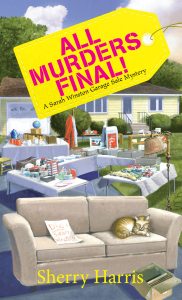 books) — and it’s interesting how different the titles of book two and three ended up being. I called book two Marred Sale Madness (at some point I realized it was impossible to enunciate so it morphed to Deal or Die — Barb’s suggestion and then my editor changed to The Longest Yard Sale and book three was originally Murder As Is — it became All Murders Final! But back to the proposal: comparable titles, audience and marketing opportunities, author bio and the first three chapters. I think having all of yours as a guideline helped when John Talbot said he wanted the proposal fast. I wrote it all in four days.
books) — and it’s interesting how different the titles of book two and three ended up being. I called book two Marred Sale Madness (at some point I realized it was impossible to enunciate so it morphed to Deal or Die — Barb’s suggestion and then my editor changed to The Longest Yard Sale and book three was originally Murder As Is — it became All Murders Final! But back to the proposal: comparable titles, audience and marketing opportunities, author bio and the first three chapters. I think having all of yours as a guideline helped when John Talbot said he wanted the proposal fast. I wrote it all in four days.
Jessie: I include all the same components in a proposal as everyone else so I thought I would talk about the process of getting them ready. I have a true north I follow when I work on a project. I’ve invariably found that for something to be successful I have to follow the fun. When I am having fun everything flows. Often that fun starts with a place and a time. Soon the characters start in whispering about their lives, loves and loathes. Then, with luck, plots niggle and twitch and build. Not long after, I feel an itch to get going on the first three chapters.
Julie: I love that we are talking about this, because fifteen years ago when I started on this journey, I had no idea about any of this. I love Jessie’s addition, and can’t say enough about enjoying the journey. While proposals are the business side of writing, and you may hate to think about marketing, your platform, comparables, etc. it is a good strategy. BTW, I was even luckier than Sherry–I had a lot of proposals to learn from.

Edith: As for how we plan ahead, I do the following. If I get an idea for a new series that I’m passionate about, I run it by my agent. If he thinks it would sell, I work up a proposal, and as Jessie says, feel that itch to get going on the first three chapters. In this publishing climate, it’s always good to have something in the pipeline.
Jessie: I’m not sure about everyone else but I don’t tend to run much past anyone before working up a proposal. I do use fun, which for me equals passion, as a guide. I’ve only run one of the contracts I’ve sold past anyone before I wrote it. For the other three, I’ve followed the fun. [Edith: Have revised preceding paragraph!]
Readers: What kind of proposals have you written in your life? What do you do when you get an idea you love and want to work on it?
Filed under: Wicked Wednesday Tagged: Book contracts, multitasking, series proposals

March 22, 2016
A Lifelong Love of Libraries
By Liz, grumbling about the sneaky spring snowstorm and hoping the temps rise fast!
Last week, I did an event for the Murder & Mayhem mystery group at the South Windsor Public Library here in Connecticut. I’d never been to this library before and was delighted to go. It gave me a chance to not only meet new readers and mystery lovers, but to check out a new library.
As a lifelong reader and writer, libraries have always been a sacred place for me. I was fortunate enough to have a mother who read to me from day one, and those were always my favorite childhood memories. She began taking me to the library as a toddler, and it became our weekly date. When I was a bit older, my father ran a small driving school nights and weekends in North Andover, Massachusetts, and on Saturdays we’d go visit him. But before we did that, we’d go to the library.
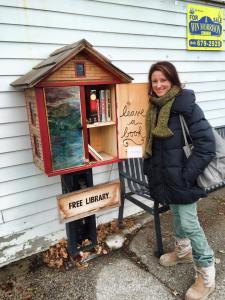
An adorable “free library” I found while visiting Woodstock, New York last year.
The children’s area in the Stevens Memorial Library was in its own room on the first floor. I could wander the shelves for hours, just browsing, checking out new titles, authors, and covers that peaked my interest. When I got older, my mother would leave me down there while she went up and looked at her own books. I found my favorite young adult book there – Daphne’s Book, a story about a young girl who grudgingly partners up with a classmate to do a project and learns about her tragic family life. (I was so delighted to see this book is still in print, and even reissued with a new cover!)
I used to check that book out once every couple months and re-read it. If I had time, I’d curl up on the floor and read some chapters from a favorite Judy Blume or Nancy Drew story. And always, I’d go home with a pile of books.
After my father closed his driving school, we spent more time at our hometown library, the Nevins Memorial Library in Methuen. It was here that I experienced many firsts: first significant research paper, first school project with friends and even first major grounding episode. Yes, during one memorable adventure researching skin for a science fair, I got home late and was grounded. (Yes, from the library. Yes, my parents had no idea what other kids were getting up to.)
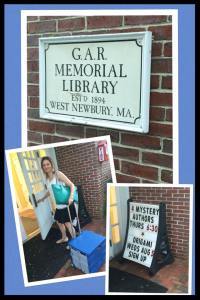
Heading to an author event with some of the Wickeds last summer in West Newbury, Mass.
As an author, it was an amazing experience to be invited to Nevins on two occasions to promote my books. It felt like visiting an old, familiar friend. And really, any library I’m lucky enough to visit is perfect. As soon as I walk inside, it feels like home.
Readers, what’s your favorite library story?
Filed under: Liz's posts Tagged: Books, library, Nevins Memorial library, Reading, Stevens Memorial Library, young adult

March 21, 2016
Dynamic Duo – Part One
By Sherry and Barb Goffman who can’t keep up with what the heck the weather is up to in Northern Virginia!
 Dynamic Duos are a part of fiction, not only in literary works but behind the scenes in the actual writing process. Today Barb Goffman and I are going to talk about the writing part of dynamic duos, and tomorrow on SleuthSayers we’re going to talk about some of our favorite fictional duos.
Dynamic Duos are a part of fiction, not only in literary works but behind the scenes in the actual writing process. Today Barb Goffman and I are going to talk about the writing part of dynamic duos, and tomorrow on SleuthSayers we’re going to talk about some of our favorite fictional duos.
Sherry: The third book in the Sarah Winston Garage Sale Mysteries, All Murders Final!, comes out on April 26th, and frankly folks, without Barb’s editorial eye, this book would have been a mess. Here are a few of the comments she wrote on the manuscript.
1. I’ve finished reading your manuscript for All Murders Final and I can say you have definitely created another great story. I love it! (Whew, this is a good way to start out because I was afraid Barb was going to tell me to dump it and start over!)
2. You need some physical action here.
3. You have several references that I think are too old, too far in the past for Sarah. If she is 39, then she was born in 1976. Her impressionable teen years would have been roughly 1989 to 1995. I have some suggestion for references that would be more appropriate for her age. (Barb went on to give specific references.)
4. We need more reaction. What’s she concluding about all this?
I appreciate that Barb always work in some positive comments along with the critical ones. And the consultation has gone both ways. We’ve brained stormed stories you’ve written, Barb. How does this help your process?
Barb: Sometimes I’ll have a story idea, but I’ll see a problem in the plot that I can’t figure out how to fix. Getting an outside perspective is wonderful at those times. I might be so focused on the path I had in mind for the story that I can’t see the small change that could lead me down another path, one without the problem, and then take me to the end I had in mind. A writing detour, so to speak. This is one of the reasons it’s beneficial to have people to help with the writing process, be they members of a critique group or just a good friend whose judgment you trust, like with the two of us.
I think you went through a similar experience while writing All Murders Final. Can you share?
 Sherry: I’ve had a lot of trouble with the very end of All Murders Final, and we talked about it probably ad nauseam. I wrote and re-wrote it a number of times. At the time I wrote it I didn’t know if Kensington was going to extend my contract or not. So I had to come up with an ending that was satisfying if it was the last in the series but I also had to leave a door open in case it wasn’t. (I’m so happy it’s not—I’m now under contract to write books four and five in the series.) And as you well know, I’ve been questioning the ending for book four, A Good Day to Buy. We’ve done a lot of talking about it too! A Lot!
Sherry: I’ve had a lot of trouble with the very end of All Murders Final, and we talked about it probably ad nauseam. I wrote and re-wrote it a number of times. At the time I wrote it I didn’t know if Kensington was going to extend my contract or not. So I had to come up with an ending that was satisfying if it was the last in the series but I also had to leave a door open in case it wasn’t. (I’m so happy it’s not—I’m now under contract to write books four and five in the series.) And as you well know, I’ve been questioning the ending for book four, A Good Day to Buy. We’ve done a lot of talking about it too! A Lot!
Dynamic Duos are great in real life, but they also exist in fiction. I’ve read a lot of your stories but not all of them. Do you use sidekicks? And if so why?
Barb: In my unpublished novel, Call Girl, my main character, Caren, has a best friend, Elaine, who essentially is her sidekick. Elaine serves as a sounding board and they get into shenanigans together. (Yes, Sherry, eventually the novel will be ready to go and I’ll send it out into the world, looking for a publisher. But not today. Ahh, this is another good use of a sidekick in real life; they nag you to work on your outstanding projects.)
Turning to my short stories, I haven’t used sidekicks a lot. Sidekicks often serve as a sounding board for characters—allowing a sleuth to think through problems. My characters often commit crime, so they don’t want to share their thoughts with anyone.
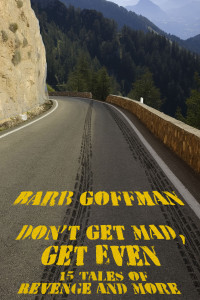
That said, I do have two stories with sidekicks. In “The Contest,” reporter Susan is competing to get the one full-time job opening at the newspaper where she’s interning this summer. The decision of who’ll be hired is based on which intern helps increase circulation the most. Susan’s roommate, Amanda, comes up with lots of interesting ideas to help her win, including knocking over a convenience store—as she points out, crime sells newspapers. In this case, Amanda wasn’t just a sounding board, but she provided humor to the story.
My second story with a sidekick is a bit unusual. My main character is Job (yes, the Job, from the Bible), and his sidekick is … God. Yes, God, who sends Job back to earth to investigate a murder. God already knows who did it, but he wants Job to find the murderer and help him/her admit the crime and repent. And because God likes making Job suffer, Job isn’t told in advance who the murderer is. Throughout the story, Job realizes that God is having fun with him, and Job sends several sarcastic thoughts back God’s way. So while there’s not a lot of back and forth between the characters via dialogue as you’d have with
a typical sidekick, Job talks to God in his mind throughout the story, allowing for humor. It may sound odd, but it works. In fact, the story won the 2013 Macavity Award for best short story of the year.
Both “The Contest” and “The Lord is my Shamus” can be found in my short-story collection, Don’t Get Mad, Get Even. But enough about me. Sherry, in your books, Sarah has two friends who serve as her partner but they both play very different roles. Can you talk a little about Stella and Carol?
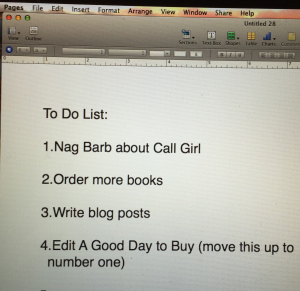 Sherry: The Lord is my Shamus is one of my favorite short stories! I can’t believe you brought up Call Girl because I haven’t nagged you about it in a couple of weeks. I’m putting it back on my to-do list. As for Stella and Carol — let’s talk about them tomorrow.
Sherry: The Lord is my Shamus is one of my favorite short stories! I can’t believe you brought up Call Girl because I haven’t nagged you about it in a couple of weeks. I’m putting it back on my to-do list. As for Stella and Carol — let’s talk about them tomorrow.
Readers: Do you have someone who is your go to person when you need help? Is it different people for different things?
Filed under: Sherry's posts Tagged: A Good Day To Buy, All Murders Final, Barb Goffman, Don't Get Made Get Even, Dynamic duos, Editors, sidekicks, The Lord is my Shamus, writing partners

March 18, 2016
Guest: Marla Cooper
Edith here (on vacation but still doing a little work). Let’s extend a Wicked Welcome 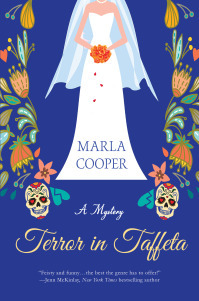
to debut author Marla Cooper! Her debut mystery, Terror in Taffeta, comes out next week, and she’s giving away a hardcover copy to one commenter. Let’s hear about the book first:
Kelsey McKenna has planned out every detail of her client’s destination wedding in San Miguel de Allende. But what she hadn’t planned on was a bridesmaid dropping dead in the middle of the ceremony. When the bride’s sister is arrested for murder, the mother of the bride demands that Kelsey fix the matter at once. Although Kelsey is pretty sure investigating a murder isn’t in her contract, crossing the well connected Mrs. Abernathy could be a career-killer. Before she can leave Mexico and get back to planning weddings, Kelsey will have to deal with stubborn detectives, late-night death threats—and guests who didn’t even RSVP.
Isn’t a wedding planner just a perfect protagonist for a murder? Take it away, Marla!
Thanks for having me, Edith. What a fun month this has been—including appearing here on Wickeds! My debut novel comes out on Tuesday, and as you can imagine, the last few weeks have been crazy. (According to a quick internet diagnosis, I am apparently “feeling all the feels.”)
Last week, my friend Cori Arnold posted the following quote on Facebook: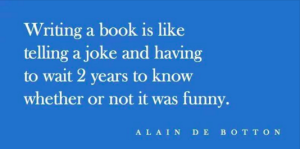
I immediately replied that yes, that was exactly what it was like. After waiting two years, my novel will finally be released into the world, and in a way I feel like I’ve been holding my breath the entire time, waiting to see if my joke is funny. Especially during that year or so when almost nothing seemed to be happening at all, and my non-writer friends were like, “So, is your book out yet? Is it ever coming out? Is this some kind of practical joke only writers understand?”
So here’s where I was two years ago. I had just completed my manuscript, and I headed off to Left Coast Crime in the hopes of learning everything I possibly could about getting a book published. While I was there, I bought an orchid that we now refer to as the Magical  Blossoming Oracle.
Blossoming Oracle.
That sucker lasted for months. It had several stems full of tightly packed buds that blossomed oh-so-gradually, and it reminded me of my experiences at Left Coast Crime and everything that was ahead of me. It was still going strong when I found my agent a couple months later, and even a few weeks later when we started sending the manuscript out to different publishers.
As I started getting rejections back, a few of the blossoms started to drop, but I didn’t freak out. After all, I was in it for the long haul. The orchid wasn’t in any hurry to give up, and neither was I. Then a few more flowers fell. And a few more rejections came in.
At some point, I jokingly told my husband, “Maybe I’ll sell my book right when the last flower drops.” There were still enough blossoms left that it seemed reasonable, and he agreed that that’s pretty much exactly how it would go down, because we have a tendency to validate literally any banana-pants thing the other person says. (I believe this is the secret to a good marriage.)
Not long after, the orchid had dropped all but one blossom, which was wilted and looked like it would fall if you exhaled anywhere within a three-foot radius. (Yes, it was full-on pathetic to look at, but dang it, I was committed to finding out if I, in fact, had a magic orchid.)
One night, we went to dinner at our favorite Chinese restaurant, and I got the following fortune:
You will soon be the center of attention. Look for good news.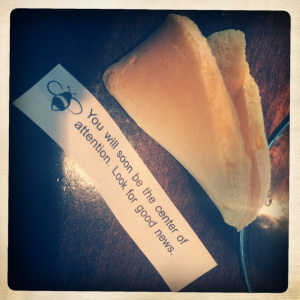
And yes, I took a picture of it because I basically considered it a promise from the universe that I was going to get a book deal, probably the next day. Okay, maybe not, but just in case….
So after we got home from our meal of Szechuan chicken and shrimp with walnuts, we were sitting on the couch, and I heard the softest little plop from the corner of the living room.
 The last blossom had fallen. Tim’s eyebrows shot up and he said, “It fell!” And then we both just giggled nervously as if to say, “Gosh, believing in the predictive ability of houseplants sure is silly!” and then I think we changed the subject. After all, I was almost guaranteed to be disappointed if I got too excited about my double-omen action.
The last blossom had fallen. Tim’s eyebrows shot up and he said, “It fell!” And then we both just giggled nervously as if to say, “Gosh, believing in the predictive ability of houseplants sure is silly!” and then I think we changed the subject. After all, I was almost guaranteed to be disappointed if I got too excited about my double-omen action.
The next morning, my agent called.
She’d sold my book.
Even as I’m writing this, I kind of can’t believe it, but why else would I have taken this picture of a near-dead orchid?
So, do I believe in signs? I’m willing to call the fortune cookie a coincidence, but the Magical Blossoming Oracle? Definitely a sign.
Which brings us back to today.
Even though I’ve known for over a year that my book was coming out on March 22, it still didn’t feel quite real to me. I mean, sure, I could see it listed right there on Amazon, and I was starting to get Goodreads reviews and everything, but still.
I guess after all this time, I still needed some convincing. But just the other day, I got the last and final sign that I needed: a copy of my book arrived in the mail.
Yep, this is happening.
Readers: If you had a Magical Blossoming Oracle, what would you want it to predict? Have you ever gotten an unmistakable sign? And how do you deal with anticipation? Remember, Marla is giving away a hardcover edition of the book to one commenter!
 MARLA COOPER is the author of Terror in Taffeta, a humorous cozy mystery about a destination wedding planner that is the first in a series. As a freelance writer, Marla has written all sorts of things, and it was while ghostwriting a guide to destination weddings that she found inspiration for her first novel. Originally hailing from Texas, Marla lives in Oakland, California, with her husband and her polydactyl tuxedo cat. You can find Marla at www.marla-cooper.com, on Goodreads, or on Facebook.
MARLA COOPER is the author of Terror in Taffeta, a humorous cozy mystery about a destination wedding planner that is the first in a series. As a freelance writer, Marla has written all sorts of things, and it was while ghostwriting a guide to destination weddings that she found inspiration for her first novel. Originally hailing from Texas, Marla lives in Oakland, California, with her husband and her polydactyl tuxedo cat. You can find Marla at www.marla-cooper.com, on Goodreads, or on Facebook.
Filed under: Guest posts Tagged: cozy mystery, Marla Cooper, Minotaur Books, San Miguel de Allende, Terror in Taffeta, wedding planner

March 17, 2016
The Tricky Waters of Adaptation
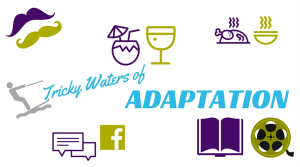 By Julie, fighting daylight savings time blah in Somerville
By Julie, fighting daylight savings time blah in Somerville
Merriam Webster defines adaptation as something (a book, play, movie, etc) that is changed so it can be presented in another form. Adaptations are very common in American popular culture and I watch a lot of them, usually with a “of course the source material is better” lens that allows me to enjoy them. Usually. But lately, for me, Agatha Christie adaptations have been a special ring of hell.
A bit of “on film” Agatha Christie history. Early film adaptations of Dame Agatha’s books left a bit to be desired. Fun as she was (and she was fun to watch) Margaret Rutherford wasn’t quite in sync as Miss Marple. Tony Randall wasn’t a great Poirot. But then the 1974 Murder on the Orient Express changed it up in the best way possible. The rich, star-studded production was a very faithful adaptation, and started an Agatha Christie resurgence of sorts. A golden age for her fans. Is there a better Miss Marple than Joan Hickson? Aren’t the David Suchet as Poirot stories wonderful? [Then there was David Suchet’s Murder on the Orient Express. What should have been a joy was not. There were decisions made about Poirot’s motives that took me out of the story. Another post for another time.] Though there were occasional films, TV became the home of faithful adaptations.
Then they decided to “redo” Miss Marple. The stories were inspired by, but not true to, Dame Agatha’s books and stories. Many, most people aren’t as familiar with the stories, and so it may not have bothered them. But I did my thesis on Agatha Christie, and am very familiar with her work. Fun as it was to see Timothy Dalton in The Sittaford Mystery, he wasn’t the Captain Trevelyan of the book. Add to that, Miss Marple isn’t in the book (!) and they completely changed the story (including the murderer and motive) and you can see the purist in me being riled up. The shows were fun, but they changed things around, or added subplots or subtext that didn’t make them better.
And Then There Were None is, itself, a story of adaptation. The original book was adapted into a stage play by Dame Agatha herself. The ending for the play was different than the ending for the book–more of an audience pleaser. There have been a few film adaptations, including a great 1945 film directed by Rene Clair. So, it was with wariness that I watched And Then There Were None on Lifetime this week.
The new adaptation has a great cast. That alone got me to tune in. But I’ll admit, I held my breath. Was this going to be true to the spirit of this great book, or was it going to go off the rails and “update” or “modernize” the story? It ended up a bit of both. It is very stylized, and has much more on screen violence than the book did. But the ending was truer to the book. Not spot on, but truer. I am being very careful about not giving anything away for those of you who haven’t seen it yet. The show is worth watching. The book is a must read.
Watching it was also a lesson in adaptation. The book has an omniscient, 3rd person narrator. In my thesis I called it the “Flit” model, where the POV flits from head to head. We get snippets of story through this device, since we can read thoughts. In film, unless you have voice over, there are two ways to tell about the past. You can tell it through dialogue. Or you can use flashbacks. This film relies on flashbacks. Effective, and a necessary technique. But not as effective, and chilling, as the source material.
Adaptations retell a story through a current lens. One reason that Agatha Christie works well in adaptation is that her plots are great, and her characters are broadly enough drawn that they can feel current. While I have some issues with some of the adaptations, or “inspired by”, Christie’s of late, I am glad they are being done, especially adaptations like And Then There Were None.
Kenneth Branagh is going to play Poirot in a new adaptation of Murder on the Orient Express. I both look forward to and dread it.
Filed under: Julie's posts Tagged: Adaptations, agatha christie, And Then There Were None, J.A. Hennrikus, Julianne Holmes

March 16, 2016
Scrivener Tips
We’ve arrived at the middle Wicked Wednesday out of five this month!
We haven’t talked about Scrivener for a while, but we [ALMOST] all use it for our writing. Wickeds, share your favorite new (or old) tip for writing fiction in Scrivener. Keywords? Compiling? Let’s let each other, and the world, know what in this fabulous application makes creating a book easier for us. On your marks, get set, dish!
Edith: I make heavy use of the synopsis card. In it (in the Inspector) I jot down the day and time the scene takes place – Thursday 4 PM, for example – and then a quick couple of sentences about what happens: “Cam drives home, reacts to news about her mom being in there with Susan.” After I read a scene to my critique group I prepend R to the synopsis so I can tell at a glance if I’ve already shared that scene. When I’m revising and I need to remember where in my list of thirty or forty scenes something happened, I can slowly mouse over the list of scenes in the Binder and the start of the synopsis shows up in a small text window.
Liz: I love the synopsis cards too, Edith. What I haven’t figured out is how to not have those little blurbs print when I compile so I don’t have to go through the word doc and delete all the extra stuff. Maybe you can show me! What I like is the ability to color code and tag things differently in the “general” section under the synopsis area. So I color code my day of the week so I can see if I have too much action each day or too little. And you can edit so the colors show in different places, like right in the binder area, or just the 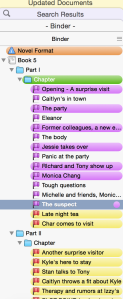 synopsis cards, etc. Then my next category is place, so I can see where things are happening around town. I’m sure there are tons and tons of things I haven’t figured out yet in Scrivener, but I love it so much – it makes life easier!
synopsis cards, etc. Then my next category is place, so I can see where things are happening around town. I’m sure there are tons and tons of things I haven’t figured out yet in Scrivener, but I love it so much – it makes life easier!
Oh – and one more thing. I use a Mac, and unfortunately there is no Scrivener app for iPad. BUT – I recently learned about Simplenote, which syncs with Scrivener so you can bring your scenes with you on iPad, then sync them back up in Scrivener. It saves all versions too, so you don’t have to worry about overwriting something accidentally. I love this when I have to travel for work and don’t want to bring two computers with me.
[Edith: The blurbs never show up when I compile, Liz. We’ll have to compare notes next time we get a chance!]
Jessie: I love the split screen feature which I use frequently during the revisions process. I am using it even more often now that I am writing books with more than one viewpoint character. Sometimes I want to try rewriting a scene from the other character’s POV and having the original scene in front of me whilst I do so gives me a strong sense of whether it is working in real time.
Julie: First of all, how much do I love that I’m learning more tips? My favorite thing to do these days is to figure out new ways to compile. Example? Lately I’ve compiled my scene cards into a document that I keep with me. When I have a block of time to write, I can look at that document, work on a scene, and then paste it into Scrivener when I get home. I am also color coding days of the week, so I can remember where I am. Also, if I end up moving a scene, I visually know I need to go back and change any time references.
Barb: Liz, have you tried check the Compile button=>Formatting=>uncheck synopsis (for every scene)?
I put all my character names as keywords, so the show up in the outline view when I am revising.

I prefer the screen outline view to the print one because it’s more compact, so I screen capture and print.
Edith: Outline view? That’s a new one for me! I also put my characters names as keywords. Must investigate outline view …
Sherry: Au contraire, dear Edith — I don’t use Scrivener. I tried to learn and even signed up for an online class. I started out with the lessons but soon grew impatient. I’d rather write than take time to learn the program. At Left Coast Crime a couple of authors were talking about a different program with a much easier learning curve — now if I could just remember the name of that program!
Edith: I’m sorry, Sherry! I thought we all used it. It’s never too late…
Readers: Questions about Scrivener? Things you love, or hate, about the application? Or, like Sherry, have you tried it and found it not to your liking?
Filed under: Group posts, Wicked Wednesday Tagged: color coding, keywords, Left Coast Crime, outline view, scrivener, simplenote, split screen feature, synopsis card, writing tips

March 15, 2016
The Detective’s Daughter- Tea for Two
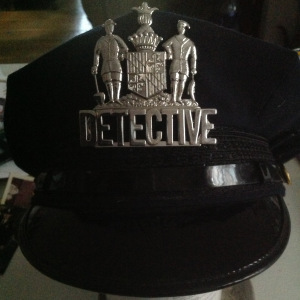
Kim in Baltimore feeling like old man winter’s not quite finished with her yet.
“I like coffee, I like tea.
I like the boys and the boys like me.”
My grandmother sang that little tune every morning to me when I was a child. Back then I didn’t care much for boys, but I did enjoy my coffee and tea. At our house, we drank tea in the morning. Nana, as we called my grandmother, would make tea to drink with our breakfast. Pop-Pop would pour mine in the saucer to cool.
Nana was the head dietician at McCormick’s, which at the time was located a few blocks from our house near the harbor. Most of the women in my family worked there. Every weekday morning Mr. Beecher would come by in his yellow cab to drive Nana to work as he had done since she started at McCormick’s in 1945. 
Occasionally Nana would invite Mom and me to the Tea Room. It was a beautiful place on the first floor of the building and was decorated in Colonial period furnishings. It was a treat not only to have tea in the special room, but to visit my Aunties as well. My favorite thing was to ride the elevator with my Aunt Betty, who was the operator at the time.
Eventually Nana retired and McCormick’s closed its Baltimore location and moved out to Hunt Valley. Aunt Betty, who had worked her way up to the mailroom, moved to Hunt Valley with the company. Once I had my driver’s license I would meet her and have tea. They now saved the Tea Room for formal meetings and it was treated more as a museum than a tea room.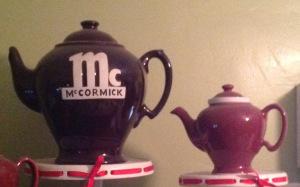 One of Nana’s prized possessions was a teapot she was given for her twenty fifth anniversary with the company. It sat on the hutch in the kitchen for years and now sits in my own kitchen along with several other McCormick’s teapots. They have become my most prized possessions, a tiny piece of my childhood I can still hold.
One of Nana’s prized possessions was a teapot she was given for her twenty fifth anniversary with the company. It sat on the hutch in the kitchen for years and now sits in my own kitchen along with several other McCormick’s teapots. They have become my most prized possessions, a tiny piece of my childhood I can still hold.
It came to my attention recently that these teapots are much in demand. People all over are searching for certain colors and the ones that include the tea basket go for a high price. I will never give mine up. I still use them,the last time being the Agatha Christie themed tea I served my book club.
On these last few chilly days, when winter is demanding to fulfill its contract, it is nice to curl up by the fireplace with a warm cup of tea. I no longer have anyone to pour the piping hot liquid in my saucer to cool, nor do I drown it in sugar and milk, but having the fragrant steam rise from the cup takes me back to long ago. It brings me home.
Gentle reader, what daily ritual have you carried from childhood to adulthood?
Filed under: Uncategorized Tagged: #grandmothers, #maryland, #mccormicks, #teacups, #tearoom, Baltimore, tea, teapots

March 14, 2016
How Do Writers Really Feel about Reader Reviews?
by Barb, back in Massachusetts, consumed by a book deadline and an upcoming wedding
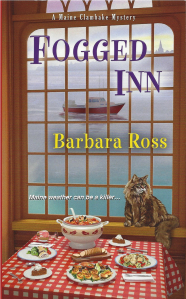 The fourth book in my Maine Clambake Mystery series came out recently, so it’s given me plenty of opportunity to think about reader reviews.
The fourth book in my Maine Clambake Mystery series came out recently, so it’s given me plenty of opportunity to think about reader reviews.
Of course, there is no one way writers feel about reviews. All the Wickeds keep track of traditional media and blog reviews (and are grateful for them), but when it comes to reader reviews, we are all over the map. One of us never looks at Goodreads or Amazon, one of us checks obsessively, constantly looking for new reviews, and the rest fall on a spectrum in between.
To check for new reviews on Amazon, if the number of reviews shown for any book listed on your author page ticks upward, click on the number, then click on See all xx customer reviews, then scroll down and flip the Sort by choice to Most recent.
Yes, you are right, I have just outed myself as the one who “checks obsessively.”
 I think the main reason I check so frequently is because my business background taught me to hunger for constant and frequently updated data, and that is something us lay people just don’t get in the publishing biz. Apple can probably tell you within half an hour every iPhone that’s been sold, what the configuration and price was, and who sold it to whom. Publishers claim they can only reconcile book sales after six months, and can only inform authors about it six months after that. I admit it. It makes me crazy.
I think the main reason I check so frequently is because my business background taught me to hunger for constant and frequently updated data, and that is something us lay people just don’t get in the publishing biz. Apple can probably tell you within half an hour every iPhone that’s been sold, what the configuration and price was, and who sold it to whom. Publishers claim they can only reconcile book sales after six months, and can only inform authors about it six months after that. I admit it. It makes me crazy.
So I look for data anywhere I can find it, and reviews, especially number and frequency of reviews being added on Amazon and Goodreads, seem as good a proxy as any.
 This means I read them all. The good ones are gratifying, of course. The less good ones are interesting, too. In every book I try something different, not to be perverse, and not because I am at all bored with the traditional/cozy form, but to avoid repetition and because I believe the tale I’m telling demands it.
This means I read them all. The good ones are gratifying, of course. The less good ones are interesting, too. In every book I try something different, not to be perverse, and not because I am at all bored with the traditional/cozy form, but to avoid repetition and because I believe the tale I’m telling demands it.
For example with Fogged Inn, the book starts with the discovery of the body. The book moves forward in time from there, but Julia goes back to the night before the murder in conversations with people and in her personal reflections throughout the book. So not true flashbacks, but kind of. There are a lot of suspects, because each suspect is really a couple, that multiples the suspect pool by two. Finally, without spoilers, the resolution of the mystery is not a traditional one for an amateur sleuth.
Some readers react well to one or more these elements and say so in their reviews, and some don’t like one or more. Some people hate one or more. I am fascinated with the reactions.
The reviews that are the hardest to read are the ones that point out a spot in a book I know is weak. “Oh, man, ya caught me,” or “Darn, I didn’t paper that over as well as I thought,” is usually my reaction.
And some reviews are just really terrible. People hate the writing style or the protagonist or the story. Just hate it.
People who have never put anything out to the public to be judged often wonder how writers, or people working in any part of the arts or entertainment fields, deal with those “just hate it,” reviews.
Luckily, the “hate it” reviews are usually mixed in with several “loved it” reviews. Sometimes, the book is the wrong genre or in some other way a bad fit for the reader. As Sherry’s daughter says, “You can have the sweetest peach, but if the person you offer it to doesn’t like peaches…”
 Editing the Level Best Books series taught me how huge a role personal taste plays in people’s reactions to fiction. Us four editors, aside from being of two different genders, were probably demographically indistinguishable from one another from a pollster’s perspective. Yet, there were stories some of us loved and others hated. There were stories people argued passionately for that other people didn’t care about at all. And when we sent our little book out into the world, we were always surprised by which stories were recognized by awards or nominations and which were specifically mentioned in reviews. Honestly, most of the time I guessed wrong about what our standouts would be.
Editing the Level Best Books series taught me how huge a role personal taste plays in people’s reactions to fiction. Us four editors, aside from being of two different genders, were probably demographically indistinguishable from one another from a pollster’s perspective. Yet, there were stories some of us loved and others hated. There were stories people argued passionately for that other people didn’t care about at all. And when we sent our little book out into the world, we were always surprised by which stories were recognized by awards or nominations and which were specifically mentioned in reviews. Honestly, most of the time I guessed wrong about what our standouts would be.
With novels, it’s really all about the math. The number of reviews is probably a decent proxy for how well a book has sold, and the averages may tell you something about the quality, but the individual bad reviews don’t mean that much. In fact, the more popular a book is, the more likely people outside it’s core audience are to try it. So a book selling tons will usually have a lower Goodreads or Amazon average rating than a book selling only to its niche readers and no farther.
I know as a consumer of movies, when I look at Rotten Tomatoes, I look at average ratings for critics and for fans (and ponder it a bit if one is wildly different from the other in either direction) and base my decision to watch on those averages, not on the individual reviews.
One thing typical reader reviewers (as opposed to book bloggers and others who also leave reviews on Amazon, etc.) may not know is that when you follow reviews as closely as I do, you get to know who some frequent reviewers are, and you’re watching them just as they’re watching you. One man who has left glowing reviews for all the Maine Clambake Mysteries and even went to the Cabbage Island Clambake was disappointed with Fogged Inn. I feel badly about that and hope he stays around for the next book. Another reviewer has trashed every one of my books on Goodreads and vows every time not to read another one. I always think, “Good, don’t,” (despite everything I just said about averages and number of reviews). And yet she returns again and again.
I described these reviewers to a non-writer friend, and he found it creepy and stalkerish, both their interest in me and my knowledge of and interest in them. But I find it fun, and a part of my world. And I’m grateful to all them. Really.
Filed under: Barb's posts Tagged: amazon, Cabbage Island Clambake, Fogged inn, goodreads, maine clambake mysteries, rotten tomatoes

March 11, 2016
Ask the Expert: Mo Walsh on Press Releases
Edith here, enjoying a warm end of winter. I invited Sisters in Crime pal and journalist Mo Walsh to tell us about how to write a press release. I’ve used her template several times with good results. She’s also a crack photographer, and always wears her grey reporter hat when she snaps photos at the New England Crime Bake. What I love about today’s post is that it’s … a press release!
Authors advised: ‘Your news release is not about you’
WEYMOUTH, MA—March 11, 2016—Authors looking to publicize their books and public events have more success with news releases that connect with their target readers and make it easy for editors to say Yes, according to mystery writer and veteran news reporter Maureen “Mo” Walsh.
“Your news release is not about you—it’s about why readers should care about you and your book. That’s what news or features editors think when deciding whether to use your release or, even better, assign a reporter to interview you,” said Walsh in a March 11 blog post at www.wickedcozyauthors.com.
Walsh has published short crime fiction in Mary Higgins Clark Mystery Magazine, Woman’s World, and five anthologies of Best New England Crime Stories from Level Best Books; and is a coauthor of the mystery trivia book A Miscellany of Murder (Adams Media, 2010). Walsh worked in advertising and public relations and now writes features for the Gatehouse Media New England newspapers.
She outlined three steps to writing an attention-getting news release:
Create a Publicity Profile for your own use, listing everything you can think of about you, your book, your characters (they have connections, too); local, regional, and major media. Include a short bio (75 words) and a longer one (200 words), plus book cover blurbs and reviews. Walsh provided sample questions to create your profile.
From this, create the guts of your news release:
Paragraph on notable award(s), brief description of series or protagonist, latest book title and plot.
Paragraph quoting notable review(s).
Paragraph with interesting author quote.
Paragraph with brief bio, hitting most intriguing highlights.
Author’s website.
After your news release, not in it, include:
Hi-resolution author headshot with photo credit; JPEG photo of book cover(s).
Not-for-publication phone numbers and email for media to contact.
Learn Basic Newswriting Style and the upside-down pyramid structure. “Newsrooms are short on staff and time. Less work for the editor means a better chance your release will be used,” said Walsh. “Learn to layer news from the must-know details down and how to write a headline, a lead (or lede), and a nut graph, plus how to use quotes effectively.”
Start with Connections You Have: hometown, alumni, employer or industry, special interests, religious or service organizations, military service, etc. What publicity outlets can you tap through these connections? “Frame your news in terms
 of these relationships,” said Walsh. “You are not just Author X, you are ‘Long Beach native’ or ‘Gardening enthusiast’; ‘Clinical psychologist’ or ‘member of the Hull High School Class of 1996’. And be prepared for follow-up questions or interviews with details about those connections.” She provided a colorful graph of such connections.
of these relationships,” said Walsh. “You are not just Author X, you are ‘Long Beach native’ or ‘Gardening enthusiast’; ‘Clinical psychologist’ or ‘member of the Hull High School Class of 1996’. And be prepared for follow-up questions or interviews with details about those connections.” She provided a colorful graph of such connections.This can all sound like very dull stuff, Walsh admitted. “It comes alive when you fill in all the blanks with lively description of your book and characters, interesting details about your life and interests, and quotes from reviews and your primary reader—you!” Walsh kindly provided some real-life press releases.
Mo will check in today to answer any questions or comment on any sample graphs you’d like to post. A past board member of Sisters in Crime New England, she is current VP of Mystery Writers of America-New England and works on publicity for the New England Crime Bake conference.
Readers: How did it go when you wrote a press release? Have you read or used good ones – or bad ones? What did you learn? Do ask Mo questions – she’s an expert!
Filed under: Ask the Expert, Guest posts Tagged: How to Write a Press Release, journalism, Mo Walsh, MWA New England, SINC New England




